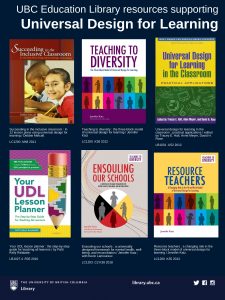Listed below are selected resources for teachers related to incorporating Universal Design for Learning (UDL) into the classroom.
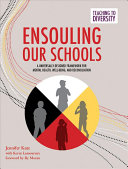 Ensouling our schools: A universally designed framework for mental health, well-being, and reconciliation
Ensouling our schools: A universally designed framework for mental health, well-being, and reconciliation
by Jennifer Katz, with Kevin Lamoureux
Grades: K-12
The authors share methods of creating schools that engender mental, spiritual, and emotional health while developing intellectual thought and critical analysis, as well as Indigenous approaches to mental and spiritual health that benefit all students and address the Truth and Reconciliation Commission Calls to Action.
 Universal design for learning in the classroom: Practical Applications
Universal design for learning in the classroom: Practical Applications
by Tracey E. Hall, Anne Meyer, and David H. Rose (E-book available here)
Grades: K-12
This book shows how to apply the principles of UDL across all subject areas and grade levels. The editors and contributors describe practical ways to develop classroom goals, assessments, materials, and methods that use UDL to meet the needs of all learner, with specific teaching ideas presented for reading, writing, science, mathematics, history, and the arts.
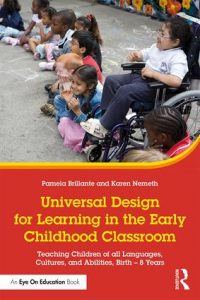 Universal design for learning in the early childhood classroom: Teaching children of languages, cultures and abilities, birth-8 years
Universal design for learning in the early childhood classroom: Teaching children of languages, cultures and abilities, birth-8 years
by Pamela Brillante and Karen Nemeth
Grades: K-3
This book focuses on proactively designing PreK through Grade 3 classroom environments, instruction, and assessments that are flexible enough to ensure that teachers can accommodate the needs of all the students in their classrooms.
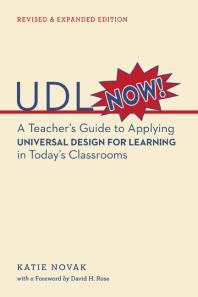 UDL now!: A teacher’s guide to applying universal design for learning in today’s classrooms
UDL now!: A teacher’s guide to applying universal design for learning in today’s classrooms
by Katie Novak, foreword by David Rose
Grades: K-12
This book shows how to use the UDL Guidelines to plan lessons, choose materials, assess learning, and improve instructional practice. Novak discusses key concepts such as scaffolding, vocabulary-building, and using student feedback to inform instruction.
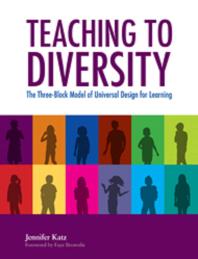 Teaching to diversity: The three-block model of universal design for learning
Teaching to diversity: The three-block model of universal design for learning
by Jennifer Katz, foreword by Faye Brownlie (E-book available here)
Grades: K-12
This book demonstrates a three-block model of UDL: Block One, Social and Emotional Learning; Block Two, Inclusive Instructional Practice; and Block Three, Systems and Structures: This model can empower educators with the knowledge, skills, and confidence required to teach diverse learners in the same classroom.
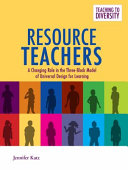 Resource teachers: A changing role in the three-block model of universal design for learning
Resource teachers: A changing role in the three-block model of universal design for learning
by Jennifer Katz
Grades: K-12
Building on the three-block model described in Teaching to diversity, Katz describes the fundamental shift in the role of the resource teacher in the inclusive classroom. This book discusses practical and innovative ways to partner with classroom teachers to create inclusive learning communities – by co-planning, co-teaching, and co-assessing instruction – with less emphasis on traditional practices of pull-out remediation, IEPs, and modified programming.
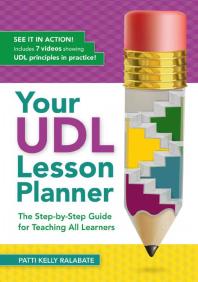 Your UDL lesson planner: The step-by-step guide for teaching all learners
Your UDL lesson planner: The step-by-step guide for teaching all learners
by Patti Kelly Ralabate (E-book available here)
Grades: K-12
Through vignettes, exercises, video demonstrations, and other resources, K-12 educators will discover how to translate UDL from theory to practice, and plan lessons that meet every learner’s needs.
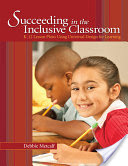 Succeeding in the inclusive classroom: K-12 lesson plans using universal design for learning
Succeeding in the inclusive classroom: K-12 lesson plans using universal design for learning
by Debbie Metcalf
Grades: K-12
This book provides strategies teachers can use to apply the principles of UDL to their lesson planning, by considering “up front” potential barriers that could limit access to instruction for some learners and brainstorming possible solutions before lessons begin.
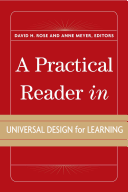 A practical reader in universal design for learning
A practical reader in universal design for learning
edited by David H. Rose and Anne Meyer
Grades: K-12
The authors collected here offer insights on learner differences, the capacities of new media in the classroom, and effective teaching and assessment practices. The book also includes lessons from teacher professional development workshops, classroom-based research, and UDL practitioners.
 Differentiating instruction: Collaborative planning and teaching for universally designed learning
Differentiating instruction: Collaborative planning and teaching for universally designed learning
by Jacqueline S. Thousand, Richard A. Villa, and Ann I. Nevin
Grades: K-12
The authors demonstrate how to use co-planning, co-teaching, and collaboration to differentiate instruction more effectively. The book showcases examples of good practice using differentiated instruction through retrofit and universal design.
Finding More Resources
To find more resources in this area, try the following:
- Search using the General tab on the UBC Library website to look for material in all UBC Library branches.
- Search using “Search Education Resources” box in the left-hand bar on the Education Library website to limit your results to physical materials in the Education Library.
- Use specific search terms, such as “universal design for learning”, “individualized instruction”, “inclusive education”, or “Instructional systems–Design”
- To find lesson plans, include “lesson plans”, “lesson planning”, or “activity programs” in your search terms.
For more help with searching, please visit the Library Service Desk or e-mail ed.lib@ubc.ca.
